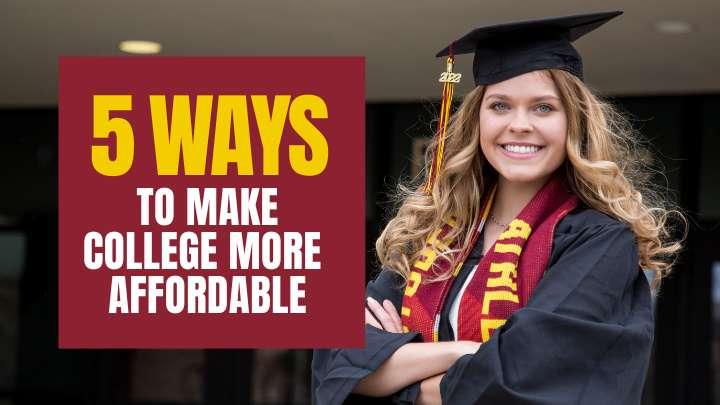Five ways to maximize financial aid and make college more affordable

For many high school seniors and their families, choosing which university to attend can be daunting. Once you hone in on your top choices, the tie-breaker in your decision may be affordability: how much financial aid can you get? Getting the answer is so much easier with a guide—an expert who has been in your place.
Enter Paula Elenbaas. She’s worked in financial aid at Calvin for the past eight years. Before that, she was a mom of five, including triplets, trying to navigate the financial aid process. She admits she was confused then. So now she works hard to make sure students and families can easily understand the financial aid process, and are able to get every bit of aid they qualify for.
Elenbaas shares five tips any high school student, transfer student, or returning adult learner can use to make their college education more affordable.
1. Ask these questions
Once you’ve narrowed down your choices to 5-10 schools, review each school’s website for this financial aid information: what scholarships do they offer? Do they also offer grants? Do your high school GPA or test scores make you eligible for additional aid? (For example, a GPA of 3.0 or higher will get you an academic scholarship that ranges from $10,000-22,000.) Do you need to submit an application for financial aid, and what are the deadlines and requirements? In Calvin’s case, if you are a Michigan resident, you may be eligible for up to $7,000 in grants just from the State of Michigan, but you must file the FAFSA by May 1 each year to be eligible.
2. Apply for ALL the scholarships
Make a list of colleges you’re considering. Visit those on your short list. (At Calvin you’ll get a $1,000 Visit Grant just for visiting.)
Spend time on the financial aid websites of the schools you’re considering, and pay attention to opportunities for scholarships that you may hear about from your admissions counselor and emails you may receive from the college. For example, at Calvin University you can apply for 1400+ Named Scholarships each year by submitting just one application. Apply between December 1 and January 31–you don’t need to figure out which scholarships to apply for – just apply!
3. Work
Build your resume as you pay for college. A summer job is a great way to help cover the cost of college! Know before spring break what you’ll do for the summer so you can get to work right away after graduating from high school. Also, know that at Calvin University you’ll be able to work on campus – we have a huge variety of student jobs ranging from working in a biology lab to doing medical research with professors to leading campus tours to planning intramurals. If you work about 10 hours a week, you’ll earn about $3,000 during the school year. Also, many of our juniors and seniors land well-paid internships while at Calvin, helping them not only earn money to pay for college, but also helping them build a resume and figure out what they want to do in that first job.
4. Be Patient
Once you’ve applied for admission, for need-based financial aid (by submitting your FAFSA), and for Named Scholarships, your job is to enjoy your senior year and wait to make your final college decision until you have all the information you need. Your admissions letter from Calvin University will include some information about financial aid – your academic scholarships and other merit awards – and you’ll receive the rest of your financial aid information in February, with need-based grants and loans added, plus any Named Scholarships you’ve been awarded.
5. Questions about your financial aid? Connect with your financial aid office!
Comparing financial aid packages from different schools can be confusing. If you have questions about your financial aid, please email Calvin Financial Aid at finaid@calvin.edu – we love to work with students and families to explain financial aid and make Calvin affordable. Sometimes a family has what we call “special circumstances” that affects a family’s ability to pay for college—maybe your family’s income has been reduced, or you’re paying for younger children’s K-12 private education, or you have high medical expenses in your family that you’re paying out of pocket. You can tell us about that by using the Calvin Special Circumstances Form. We will use that form to determine if you’re eligible for additional need-based grants based on your family’s finances.






